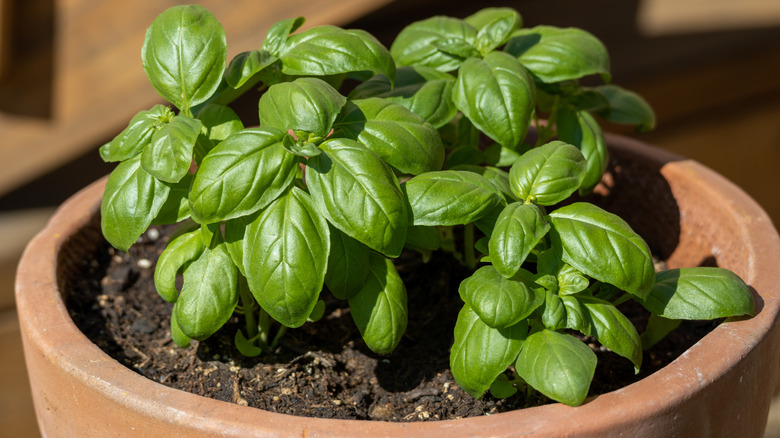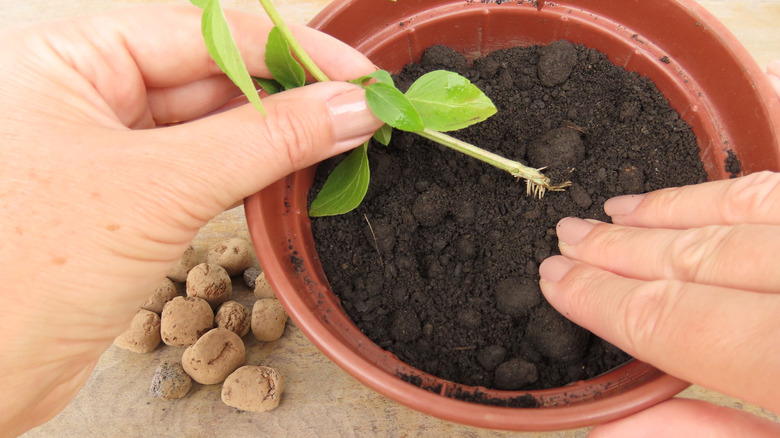How To Grow Basil So You Have A Never Ending Supply Fresh From The Garden
Truly one of the glories of the summer garden, basil (Ocimum basilicum) is a pungent herb that adds excitement to all sorts of salads, sandwiches, and pasta dishes. The thought of that homegrown supply of basil coming to an end with the arrival of winter is a sad one, but it doesn't have to be that way. If you want to keep growing basil throughout the year, you may be able to pull it off with one easy gardening trick — propagating basil from cuttings.
You're likely pruning your basil plant for maximum growth anyway, so why not use the cuttings to grow more plants? As a member of the mint family, basil readily produces roots from its stems, making propagation from stem cuttings supremely easy. For this gardening hack to be successful, you'll need to follow best practices when rooting cuttings, as well as making sure you have the conditions you need to keep this herb alive indoors when needed.
Growing basil from cuttings for a long lasting supply
Basil actually grows faster from cuttings than it does from seeds, and it also produces more leaves this way, making the stem rooting propagation method the one to try if you want to keep a basil crop growing going all year long. Gardeners should cut the top 4 inches or so off of stems right below a pair of leaves, making sure to select stems that aren't yet flowering. Leave the bottom 4 to 5 inches of the plant intact if you want it to grow back.
After taking the cutting, pinch off the lower leaves. Basil is one of the herbs you can grow in your kitchen without any soil, so either place the stem of the cutting in a glass of water or in a nursery pot of sterile starting mix. Keep the flowers trimmed off so that the plant will keep producing new leaves. If you truly want a never ending supply of this delicious herb, you'll need to follow some helpful tips for growing basil, such as using a grow light to provide enough light indoors.

